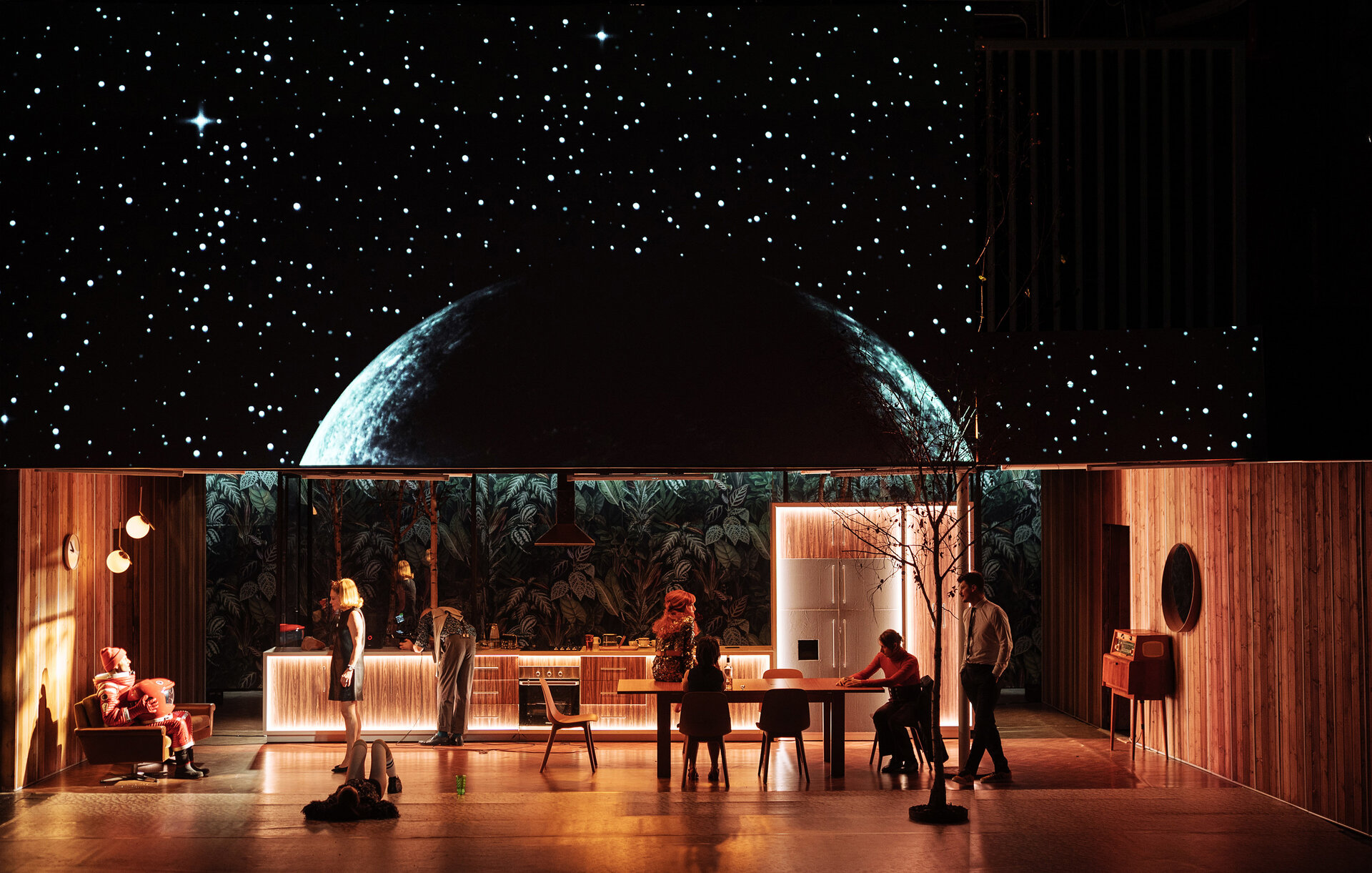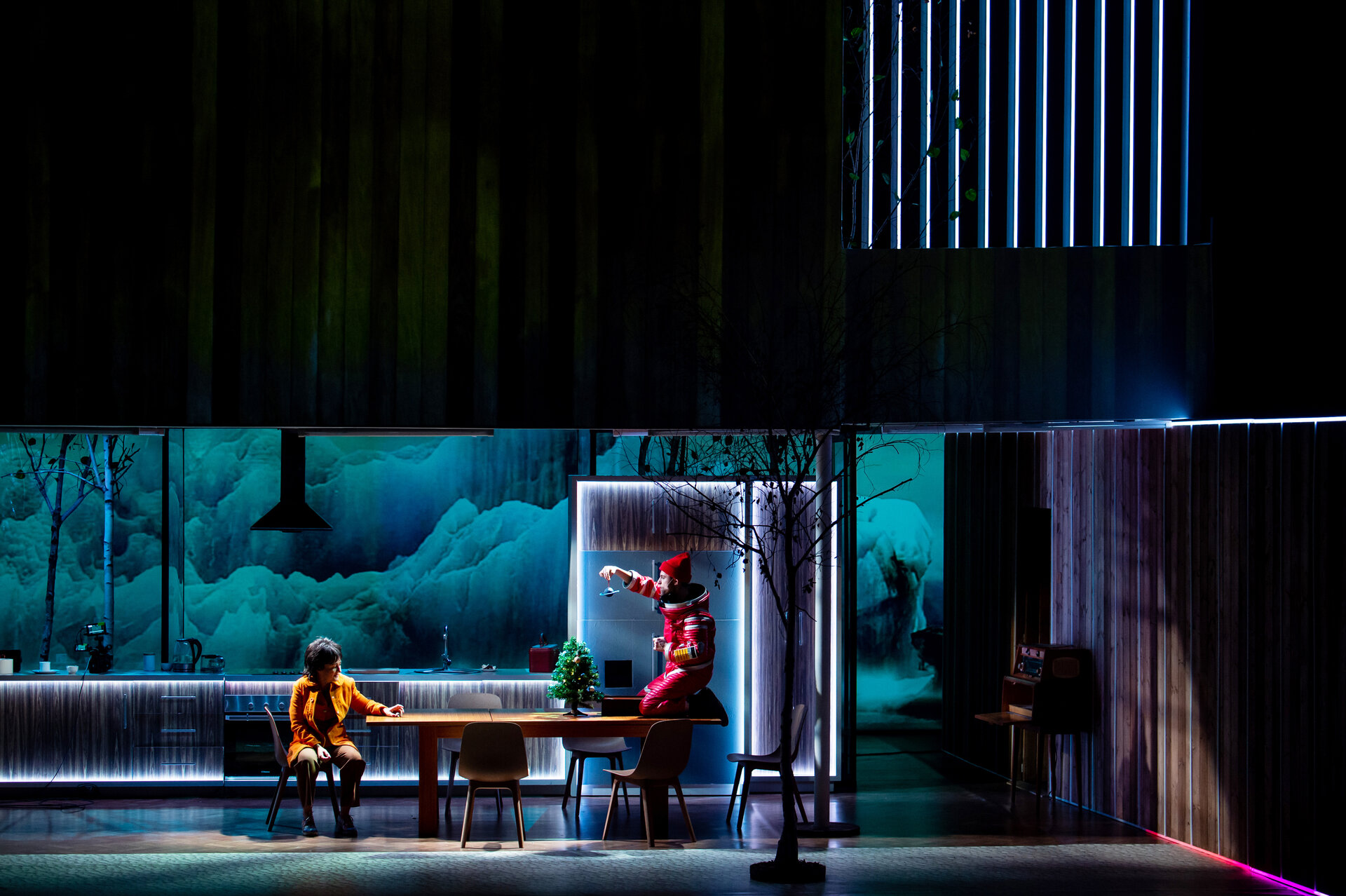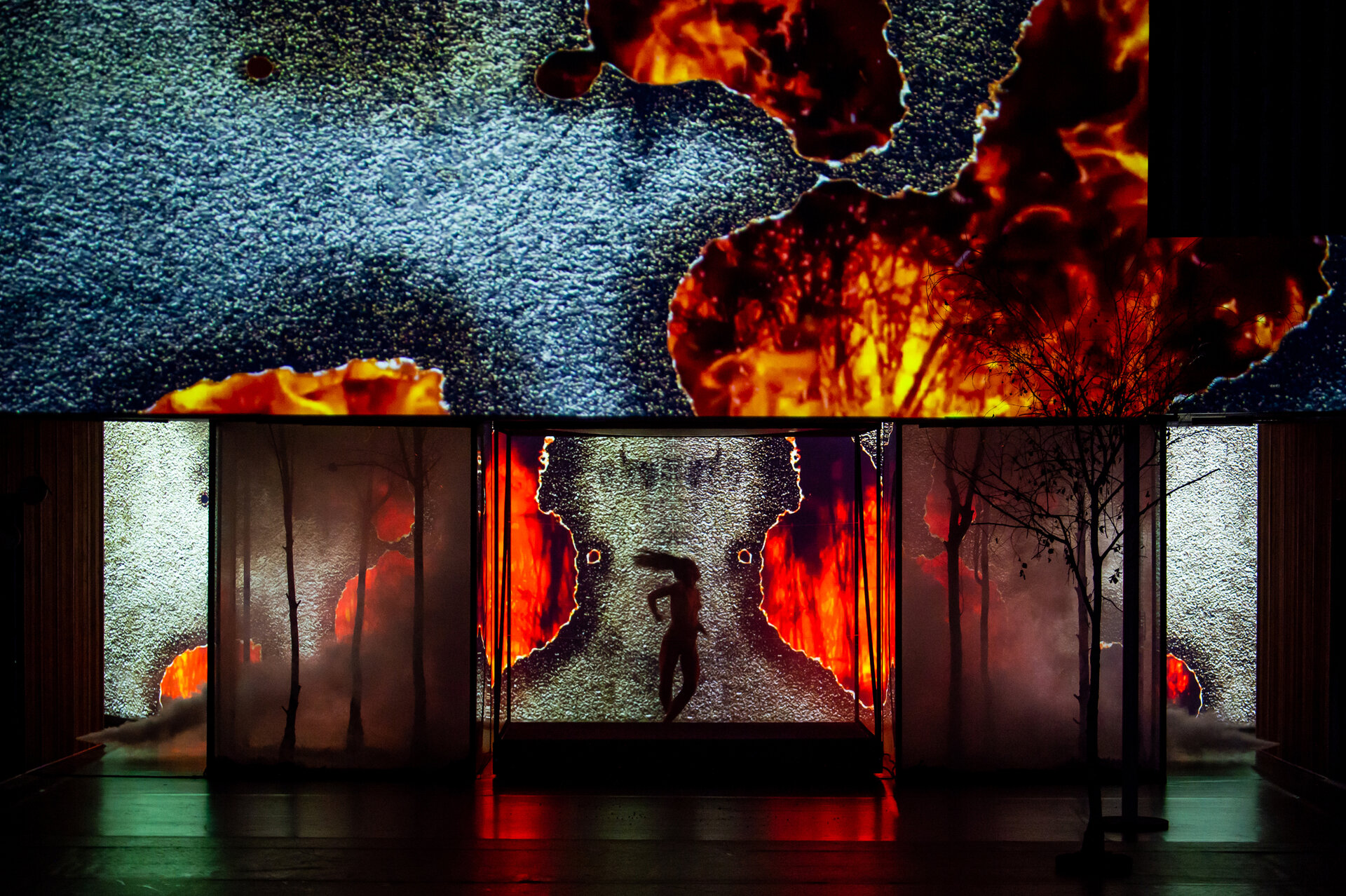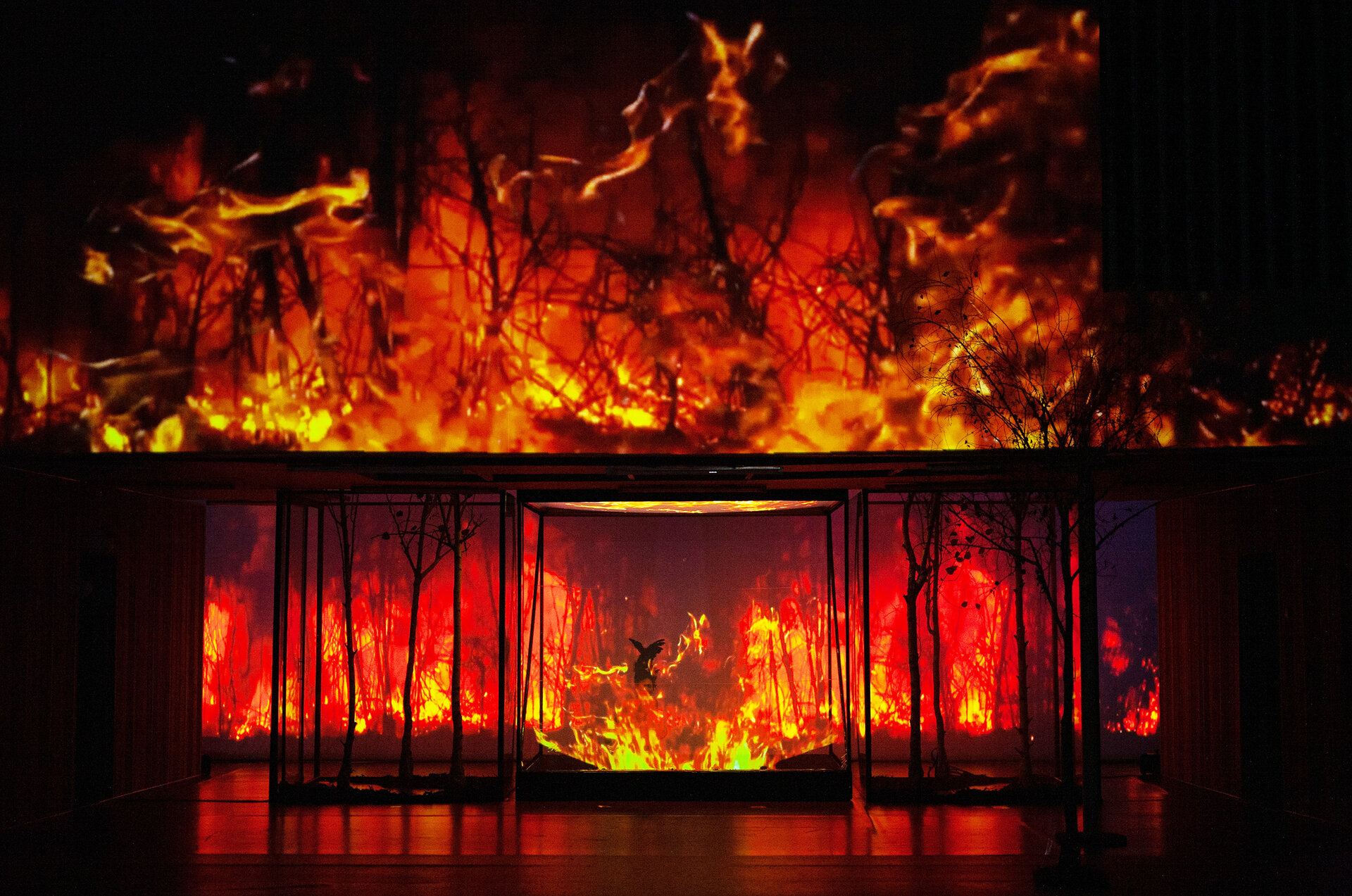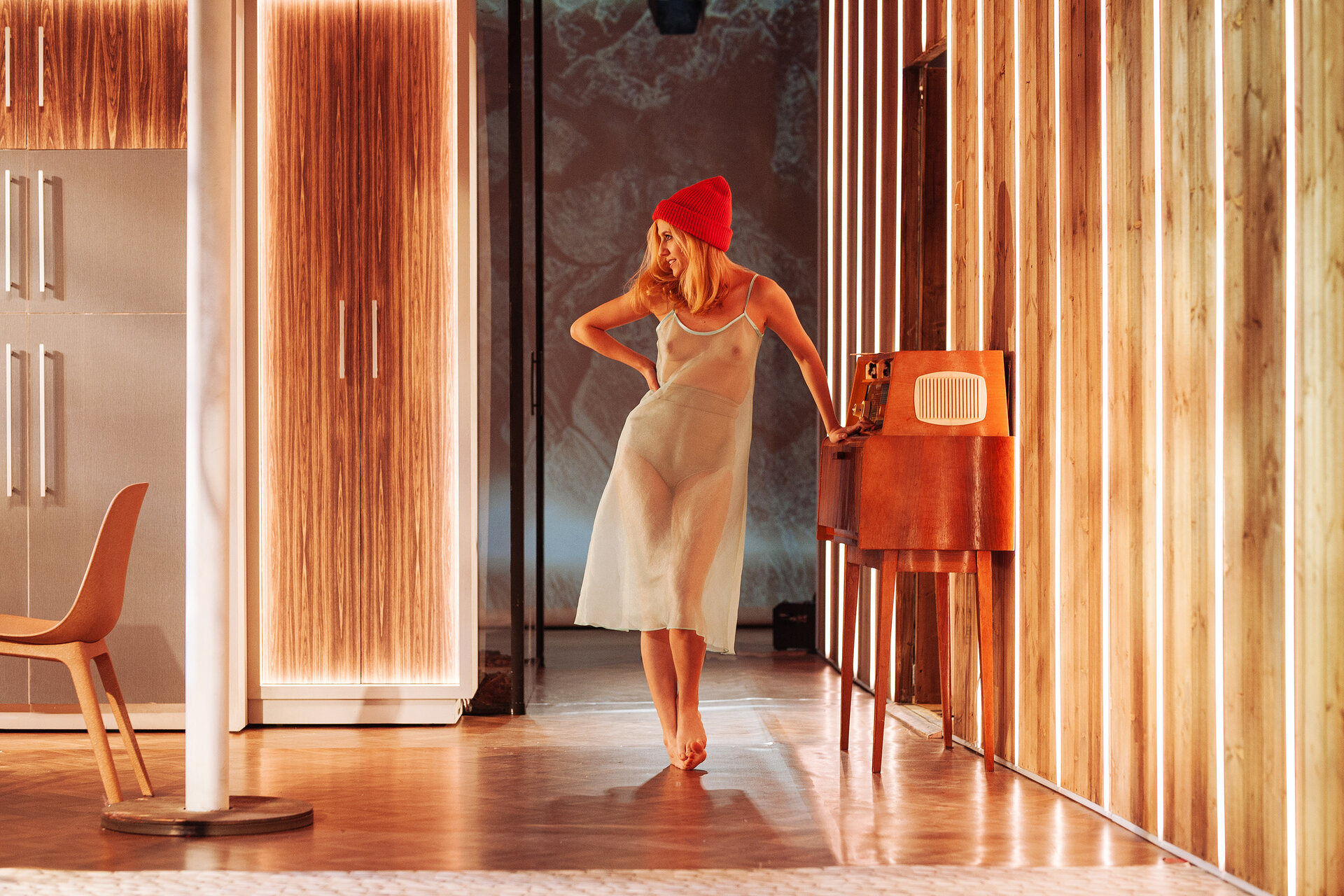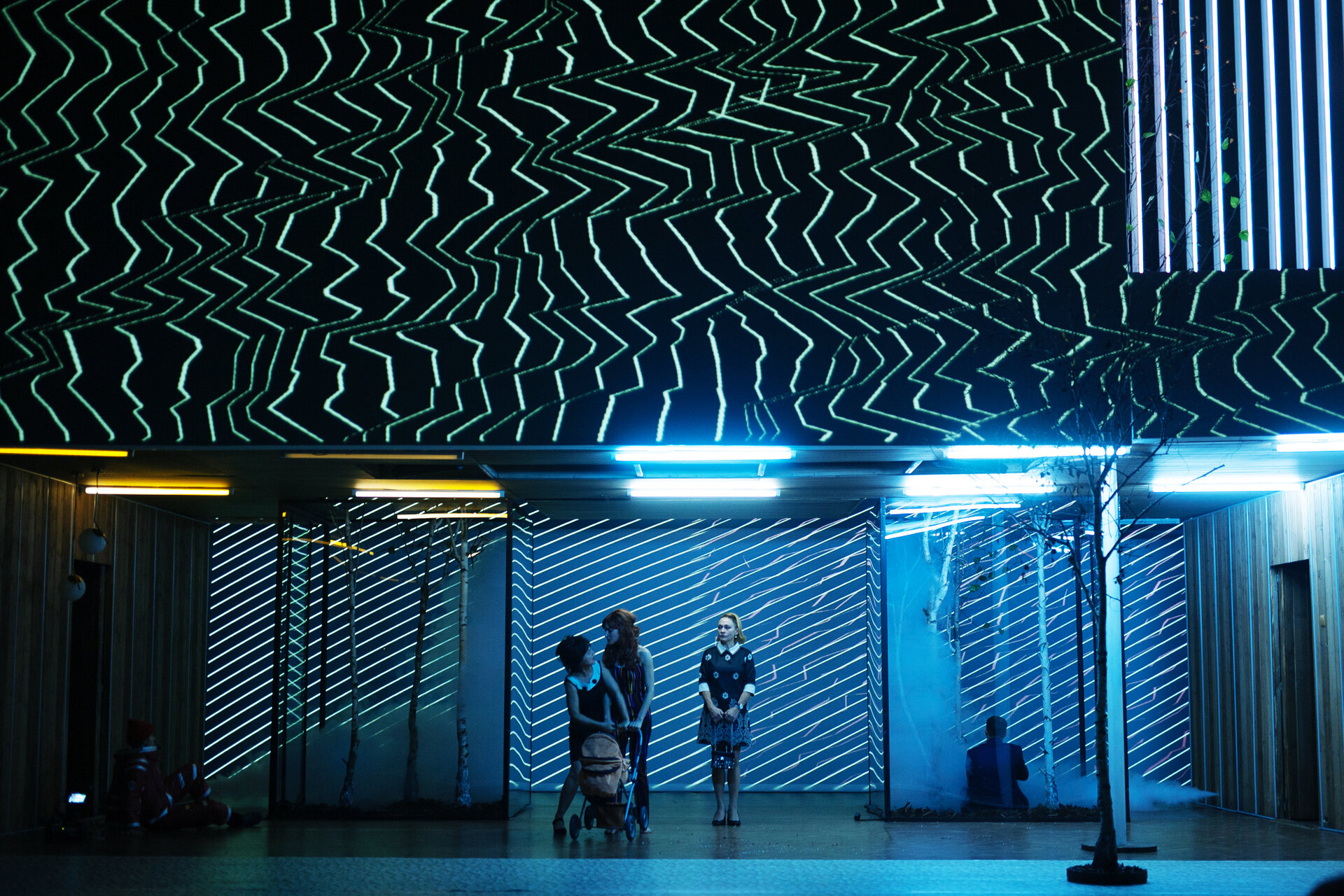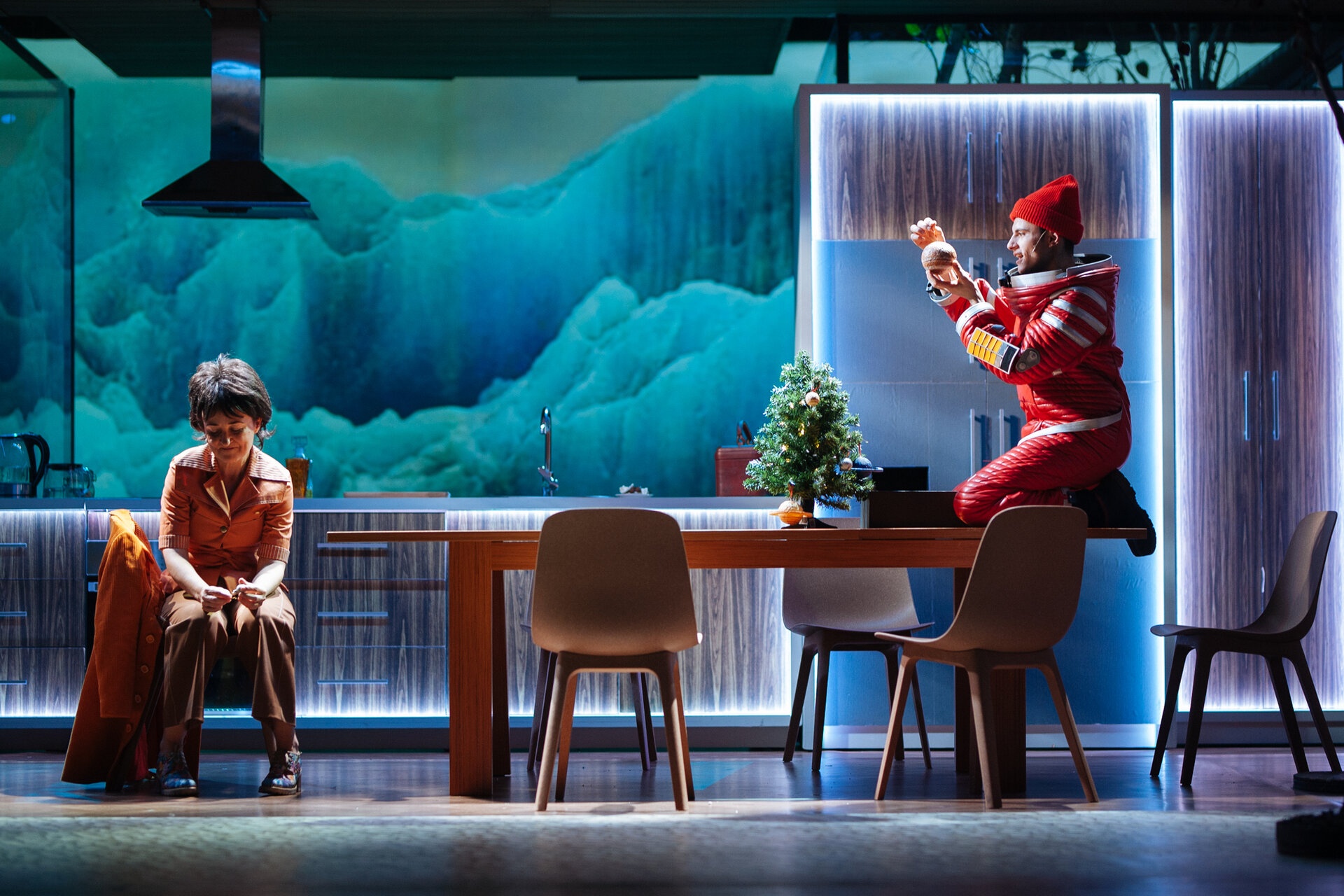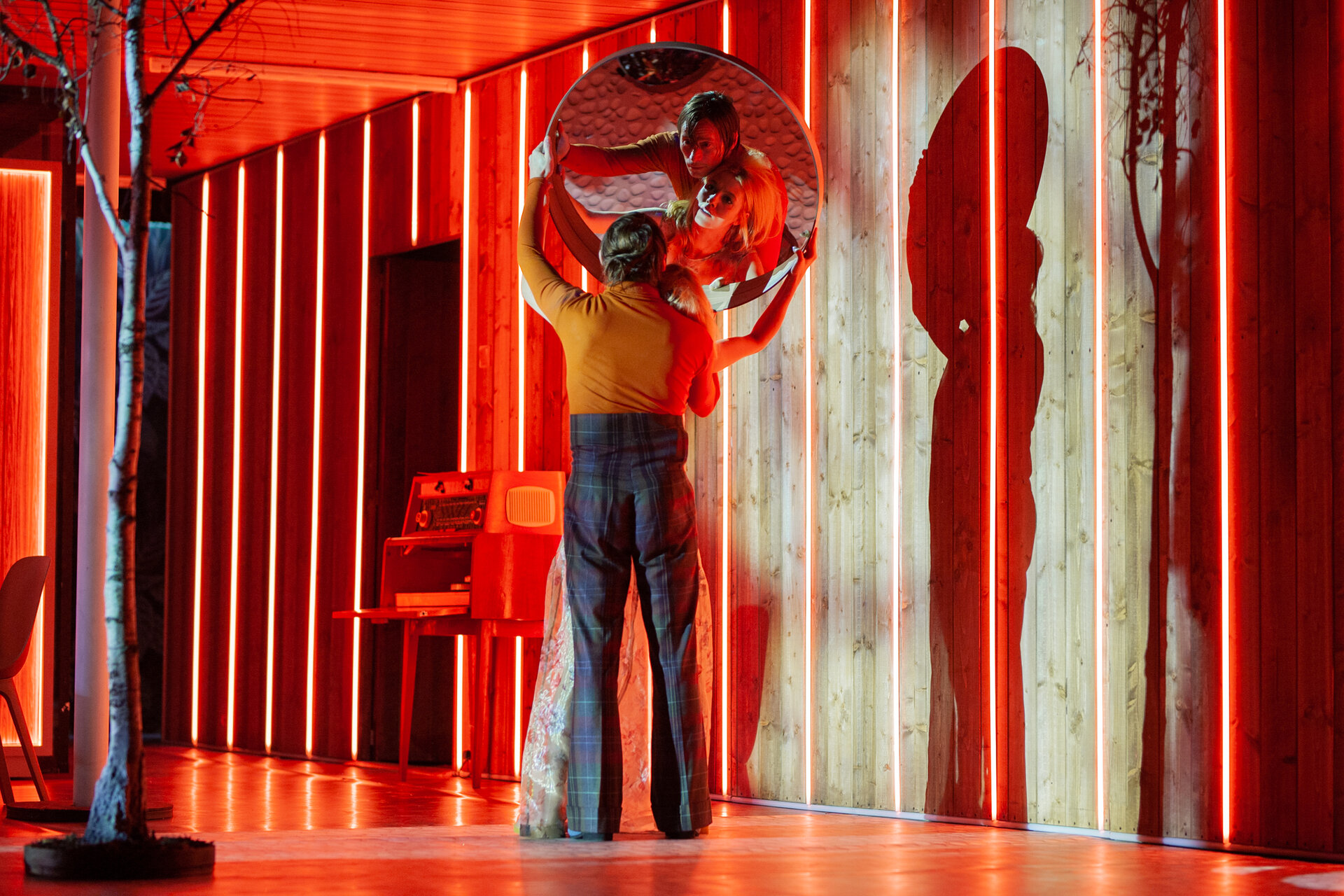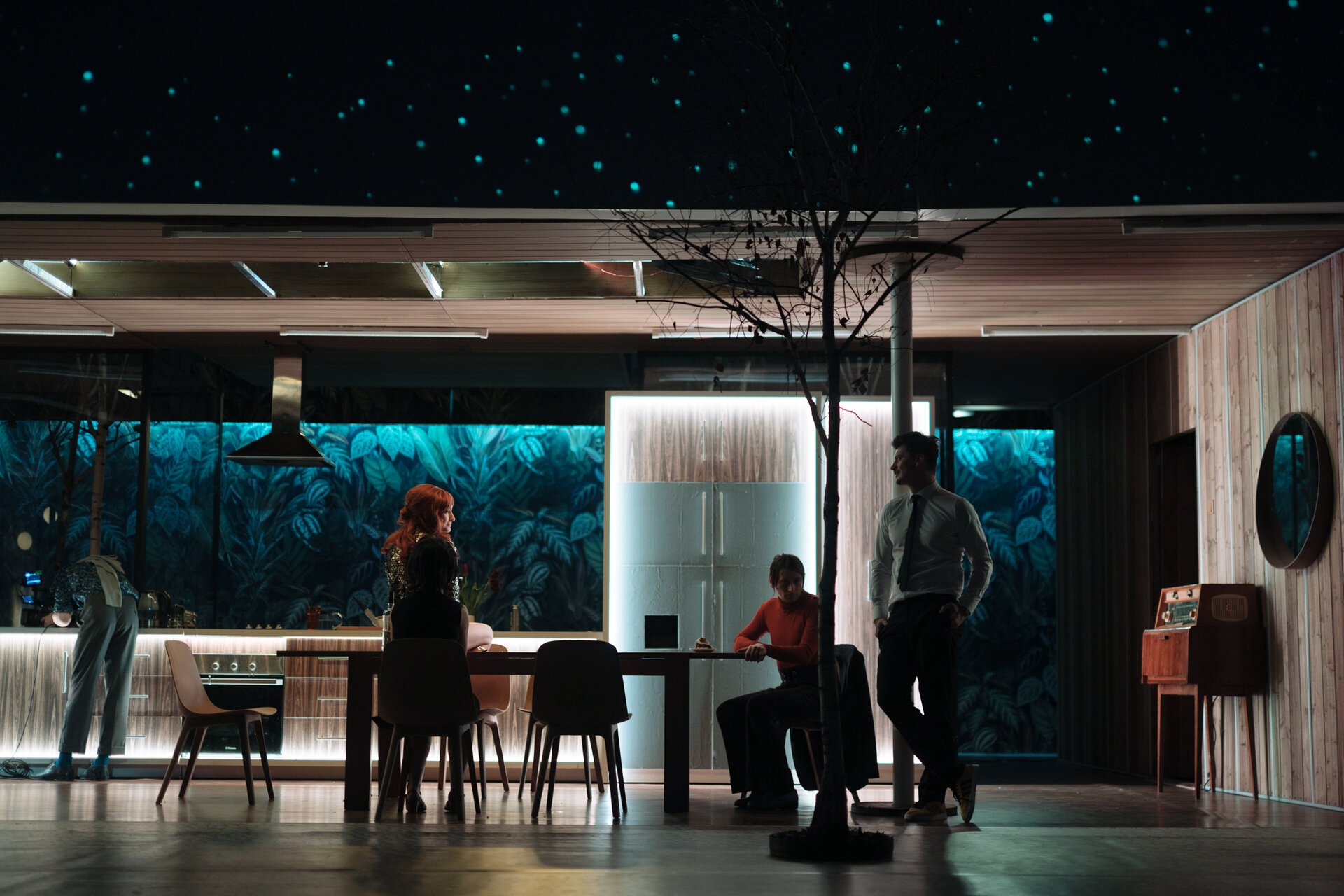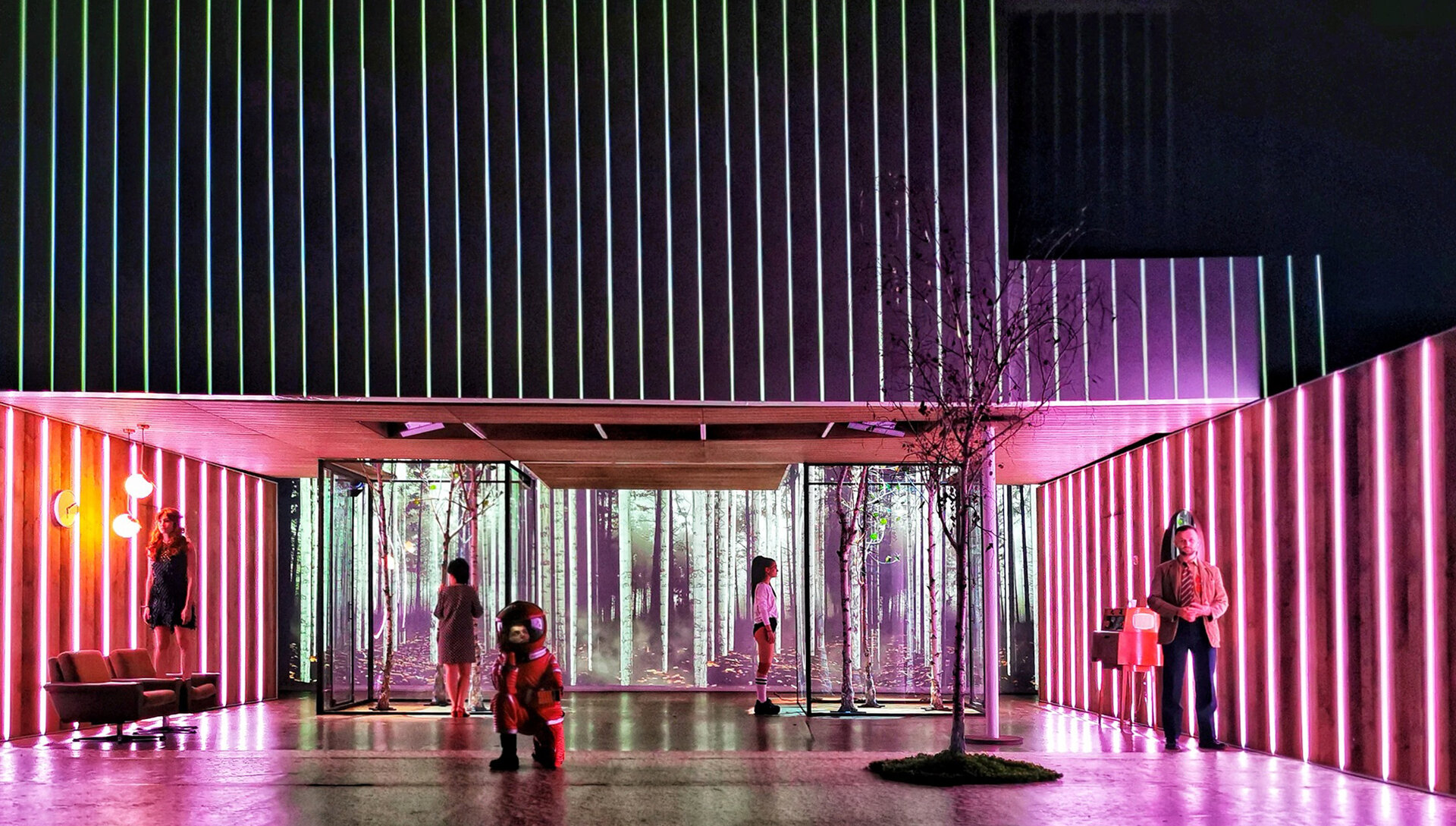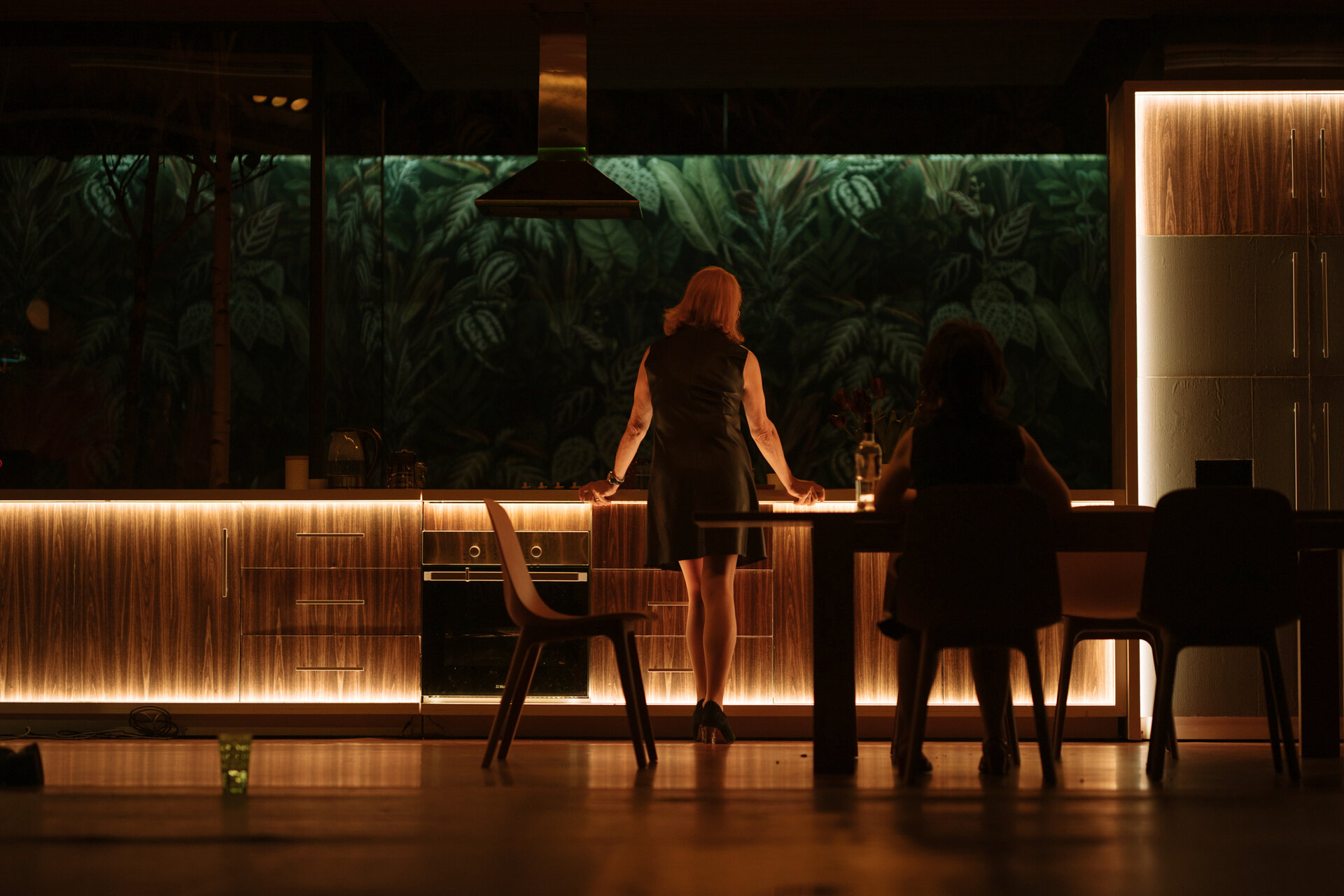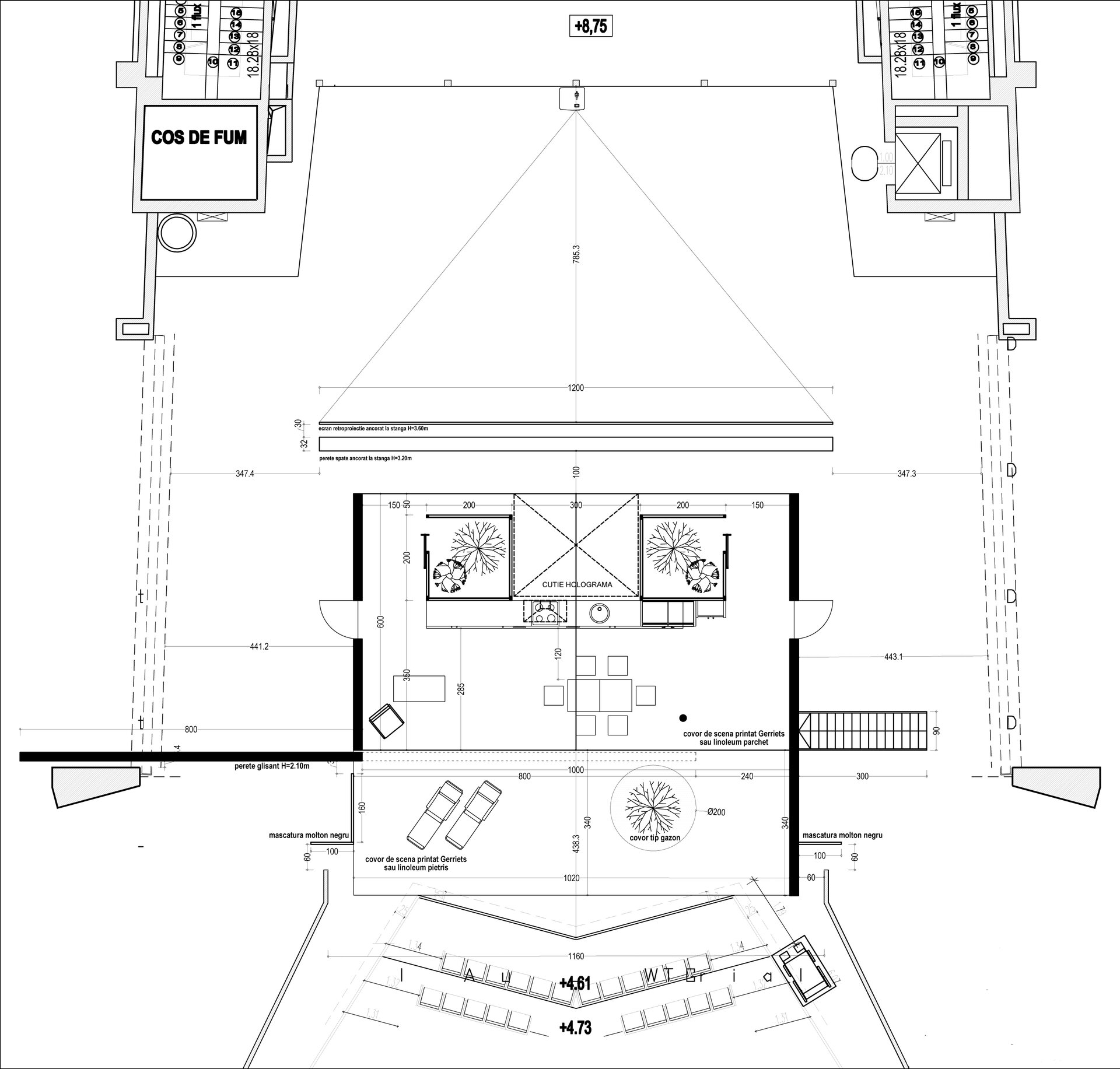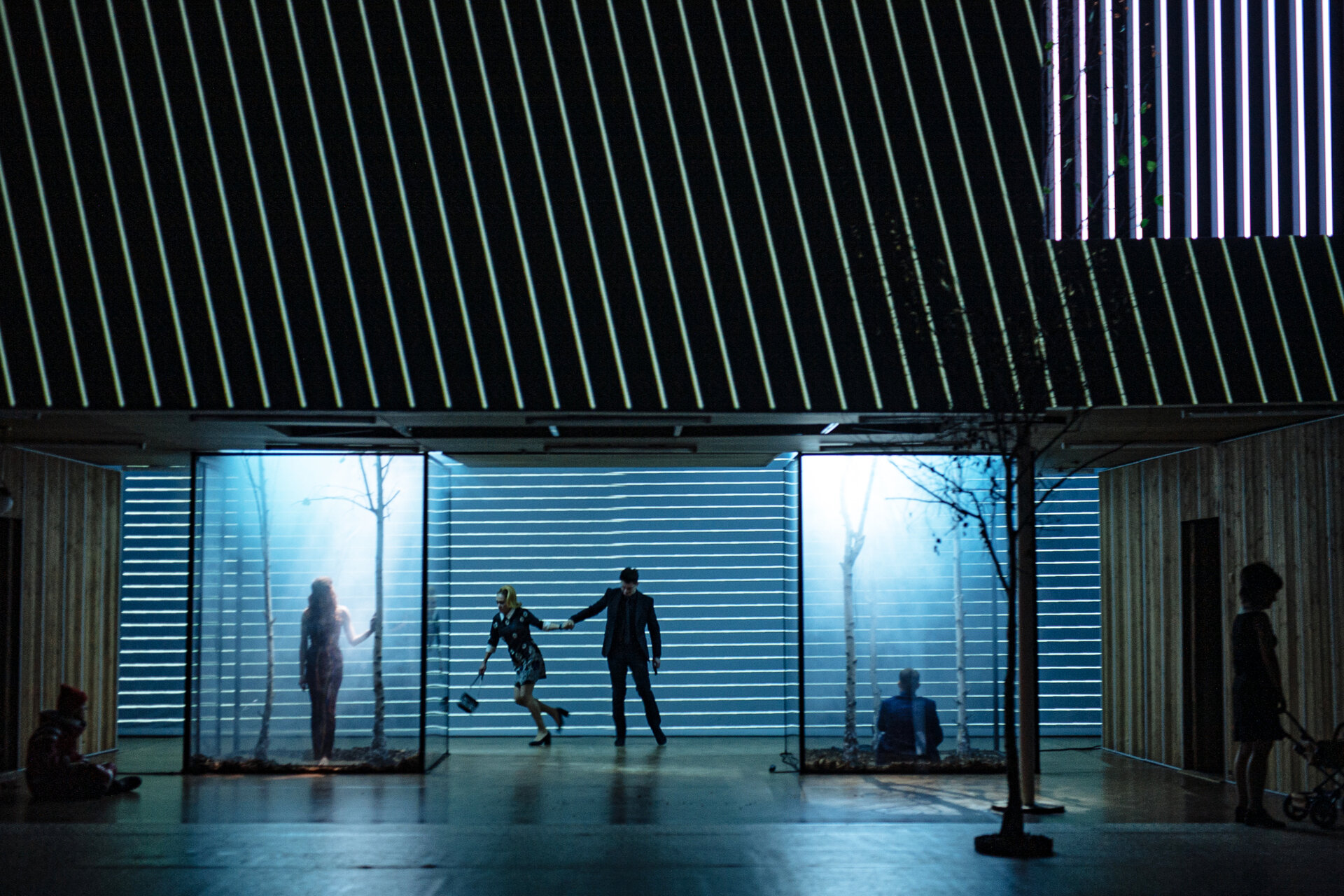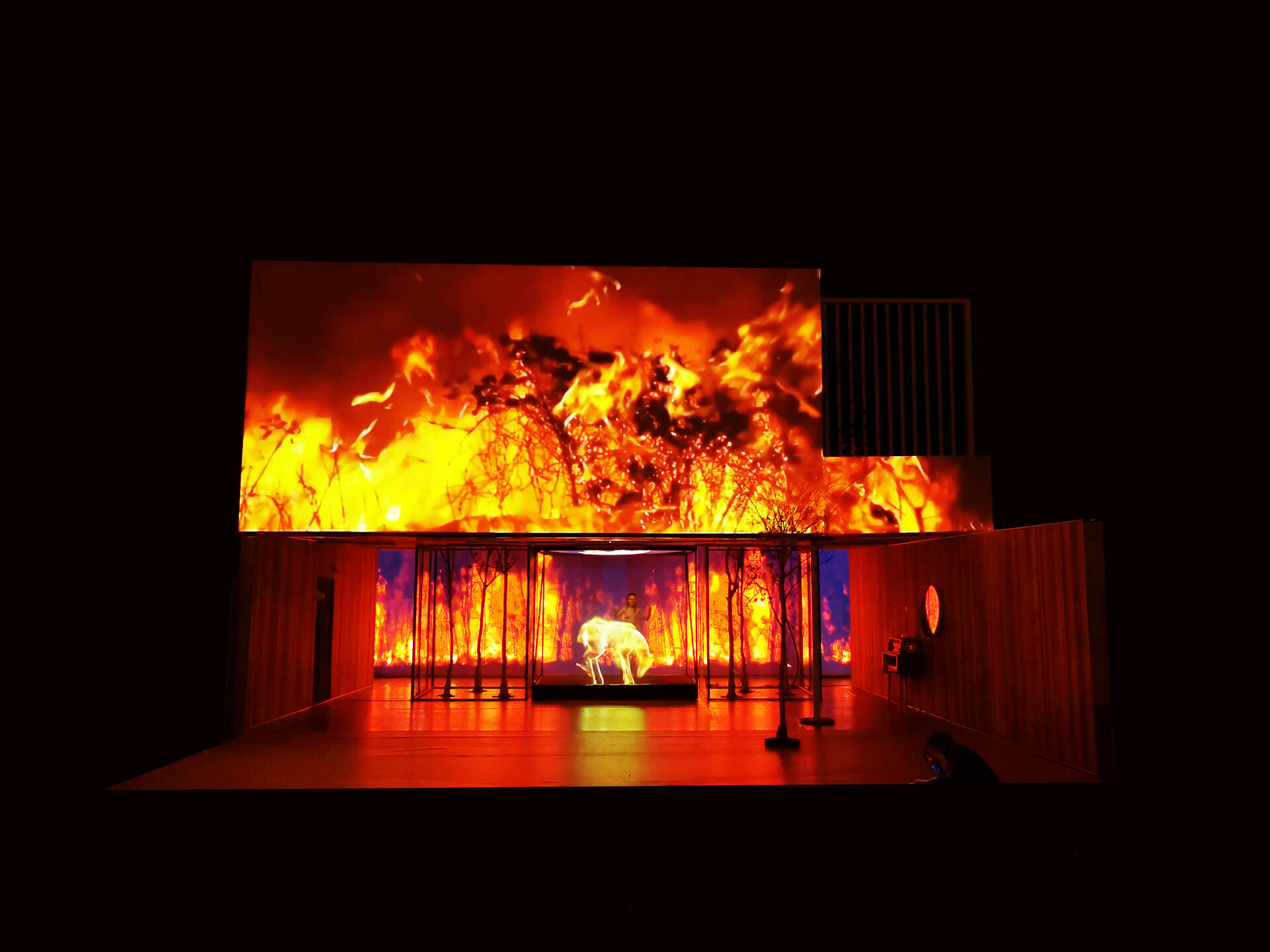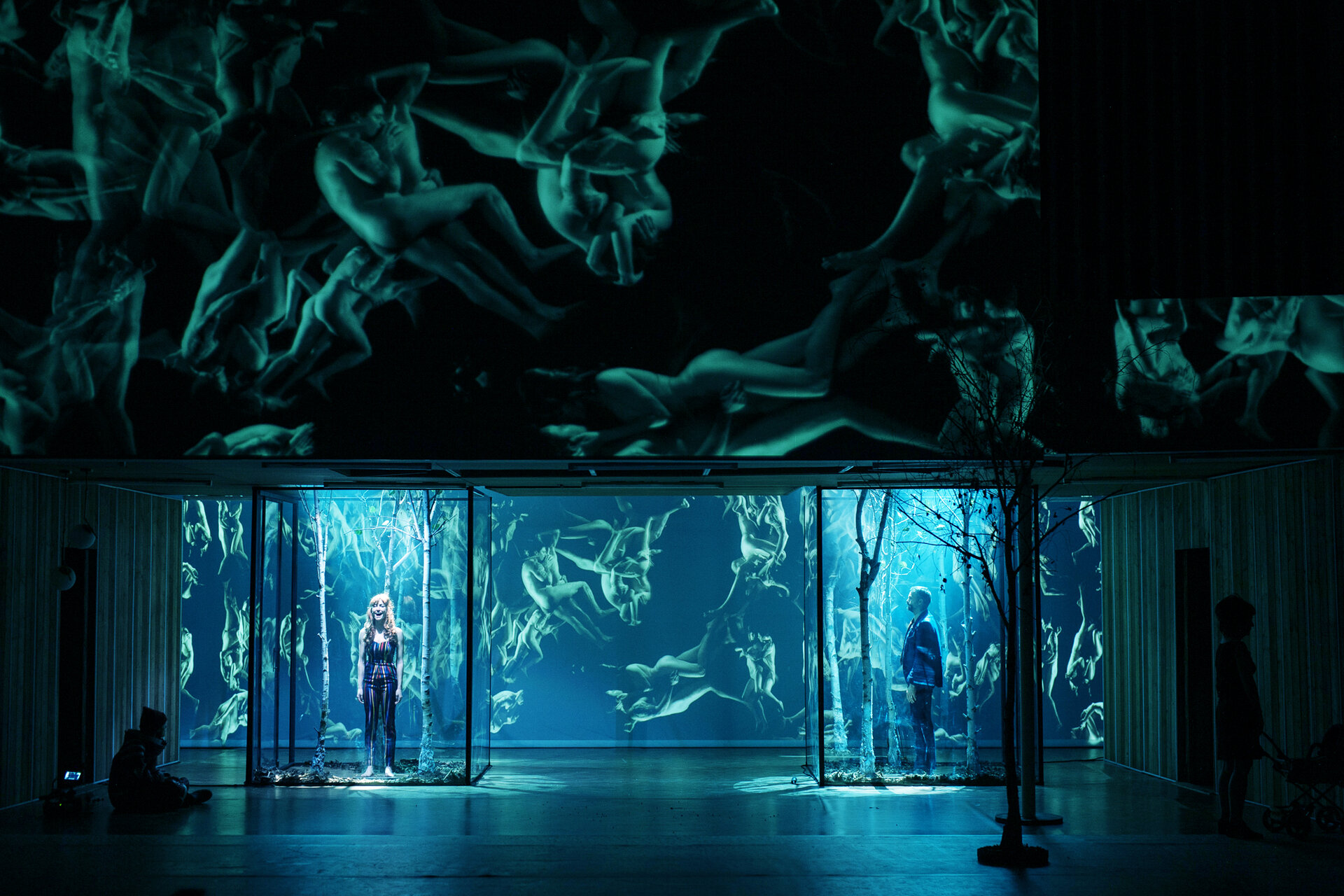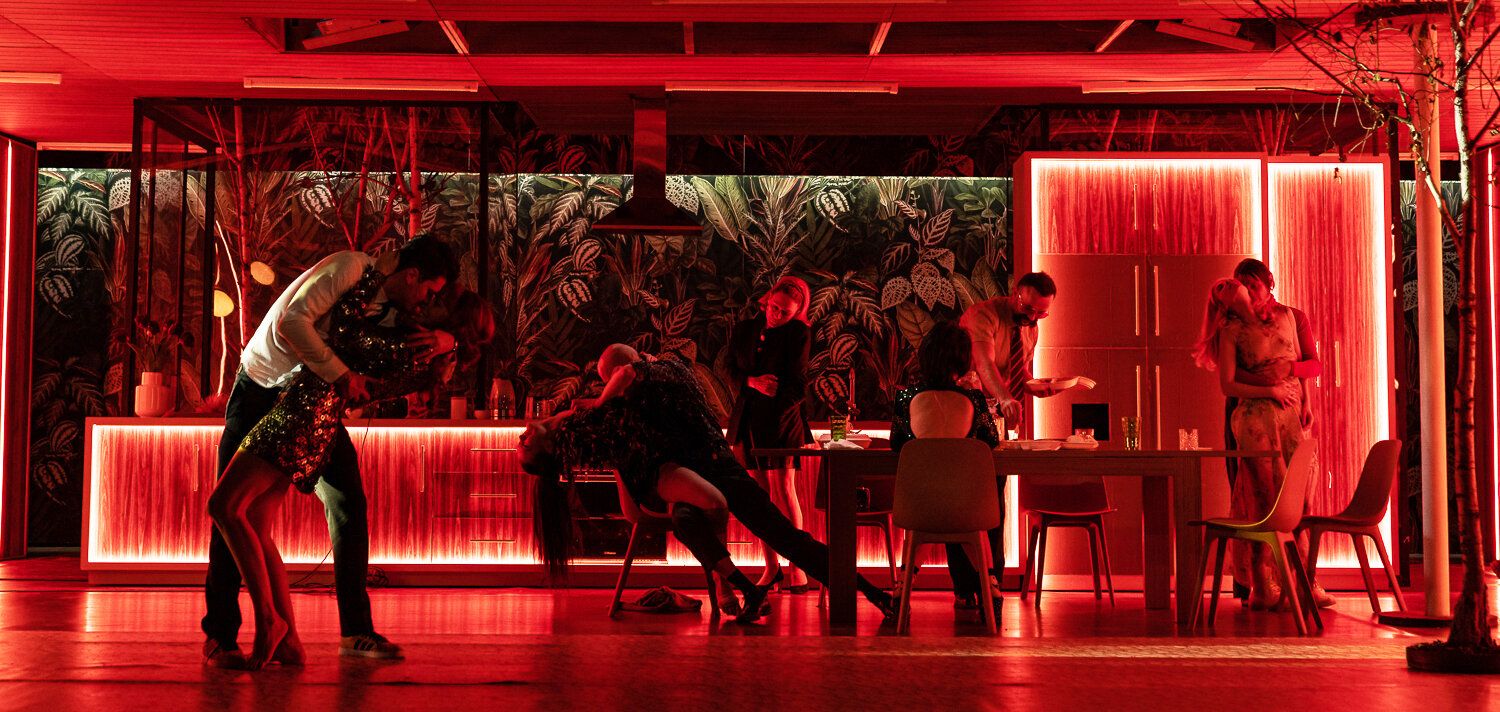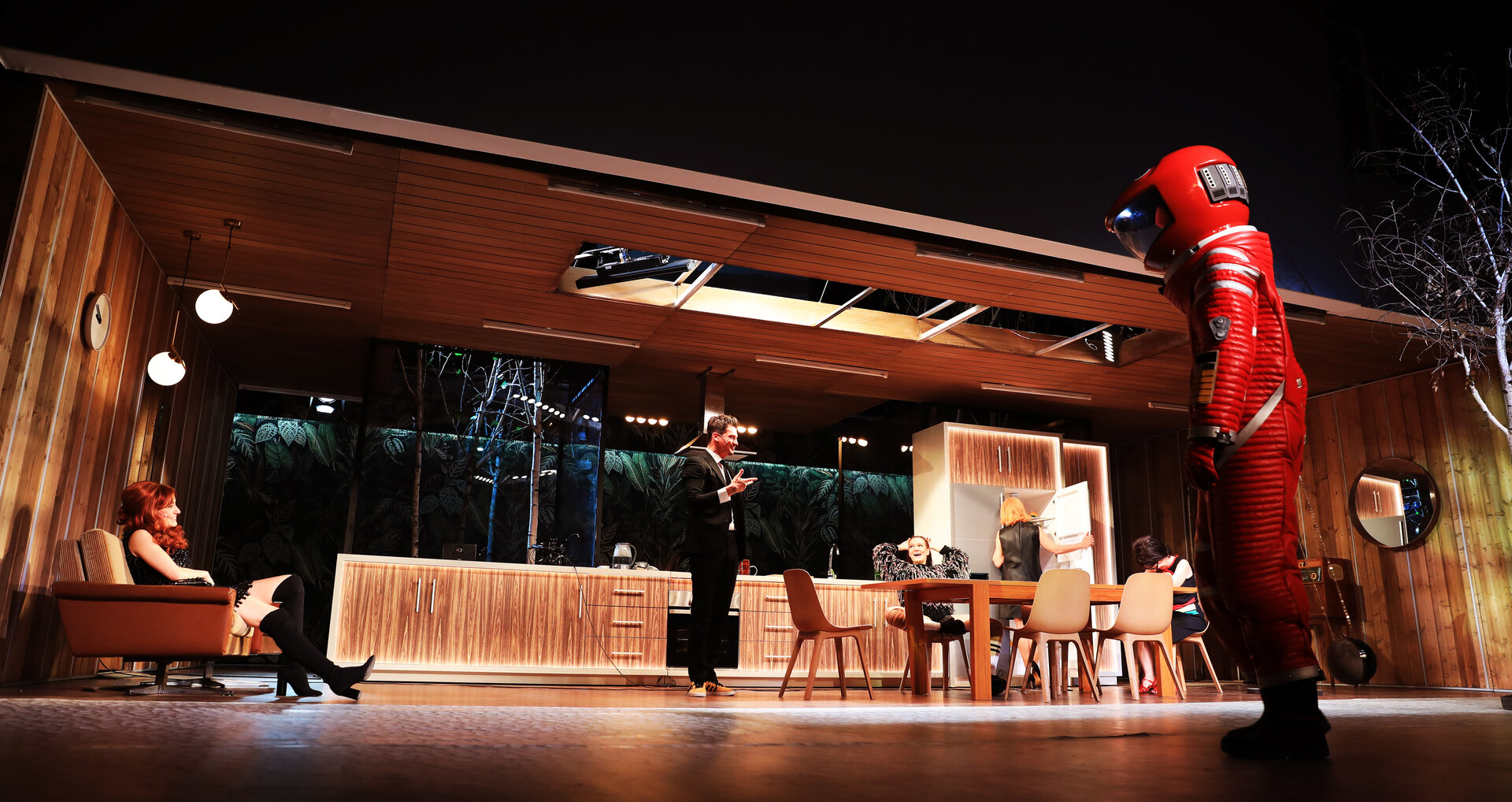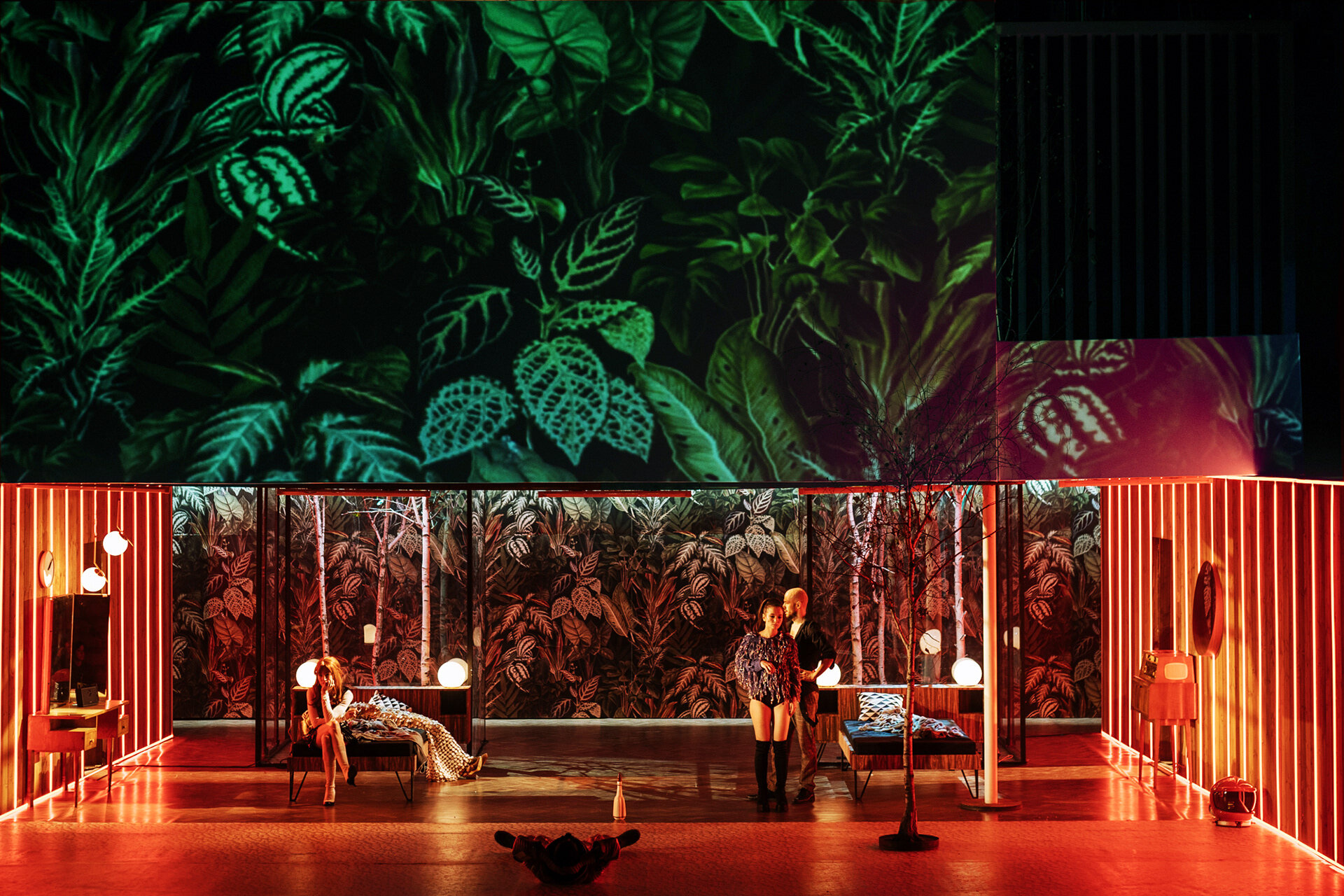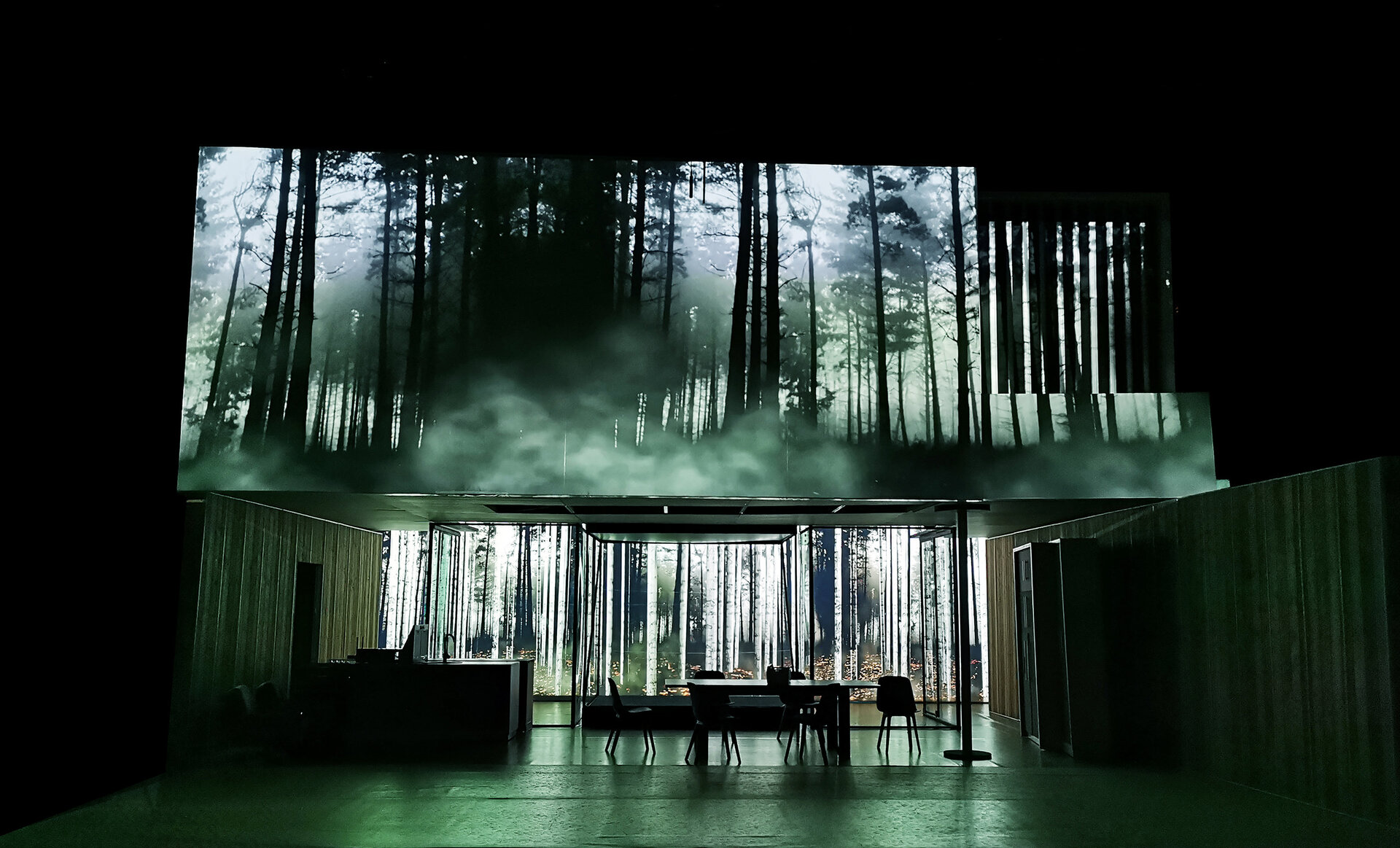
- Nomination for the “Interior Space Architecture / Exhibition and Scenography Design” section
Three Sisters. An (Un)usually Free Script Based on Chekhov
Authors’ Comment
"Three Sisters. An (Un)usually Free Script Based on Chekhov” directed by Radu Afrim for Bucharest National Theatre is a contemporary (un)permitted museum, where the arts are harmoniously combined: dance, poetry, film, music and architecture. It's a deeply reflective show. Chekhov's world is built here with intelligence, but also with kindness and empathy towards the characters and their wounds, which are in many ways our own.
The action of the play takes place in the house of the Prozorov family, a modernist villa placed outside the city, "somewhere in Romania". The Prozorov House is in itself a scenic metaphor that transports us on different thematic routes: happiness, love, addiction, forgetting, old age, missing out, past-future, etc.
The set has an active role, moving the stage through successively revealing areas, sliding walls, symmetries, transparencies, lights that highlight the actors. As the story progresses, the space changes, following the play's dramaturgy. Initially we see the facade of the Prozorov house, then we become guests in the family's living room, voyeurs in the sisters' bedroom and witnesses of a space that gradually empties out.
The scenography works with the video part, feeding each other aesthetically. The video projections enrich the hermeneutics, giving birth to additional layers of meaning and expressiveness. The actor-image ratio, the correlation of real-time filming and live projection are ways to emphasize details, to bring closer what is impossible to focus by theatrical methods. The integrated light emphasizes the geometry of the space but also leads the eye towards the center of interest of the scene.
The minimalist and pictorial space contains a diversity of visible symbols: from the seclusion of the birch trees in glass cubes, to mirrors and reflections, from the Christ image in a womb of light - to the cosmonaut costume of a kind of autistic detachment and especially the decorative or hallucinatory visuals. All these elements capture the essence of Chekhov's text.
- Exhibition Design in 2 parts: Romanian Design Week 2020 / Central Exhibition & Diploma 2020
- Three Sisters. An (Un)usually Free Script Based on Chekhov
- Diploma 2019. Exhibition of architecture, art and design university graduates
- Pavilion Untold - Hamza X BT
- Leviathan. In the guts of the collection. Transformation of the second floor of the National Museum of Contemporary Art
- Year One. First Year. Model / Vocabulary / Tools
- Beyond the legend. Neagoe Basarab
- “Herbarium” after “The Book of Plants and Animals” by Simona Popescu
- “Meerkats House” by David Drabek
- The Bucharest of Mircea Eliade
- The Modern Idol. Henry Moore in the Eastern Bloc
- “Journey by Moonlight” after Antal Szerb
- MLMSN_IZO
- Batthyaneum. Astro-stories and mechanical animations
- Coronation Festivitie
- L'Année dernière à Malmaison
- From near to far. Visual mappings of the 2 Mai and Vama Veche space
- Smoke Screens
- Space within space
- Bildfahrzeuge (Image Vehicles). A Peter Jacobi Retrospective / National Museum of Contemporary Art
- Volume of a sleep
- Márta Jakobovits / The Road Travelled / National Museum of Contemporary Art
- This Museum is for you!
